The Migrant Offshore Aid Station (MOAS), which is the first ever privately-funded migrant aid station, will set off on the first of a number of missions on Wednesday after two days of sea trials.
However, even before the proper mission started, the Phoenix 1 has already carried out its first rescue mission. The boat was heading to an area to pick up supplies when it came upon a small fishing boat drifting in the water. The engine had stopped working and the fisherman, who had his five-year-old son with him, was getting worried. The man's boat was tied up alongside the MOAS ship until help arrived.
The mission was officially launched this morning on board the Phoenix 1, a former expedition vessel which has been transformed into a floating migrant aid station. It includes a fully-equipped sickbay, two inflatable fast boats and, most importantly two helicopter drones armed with the latest imaging technology. Plus a professional crew.
The drones, which were successfully tested today, have a range of 100 km - practically the distance between Malta and Sicily - a maximum speed of 200km/h and a flight time of six hours.
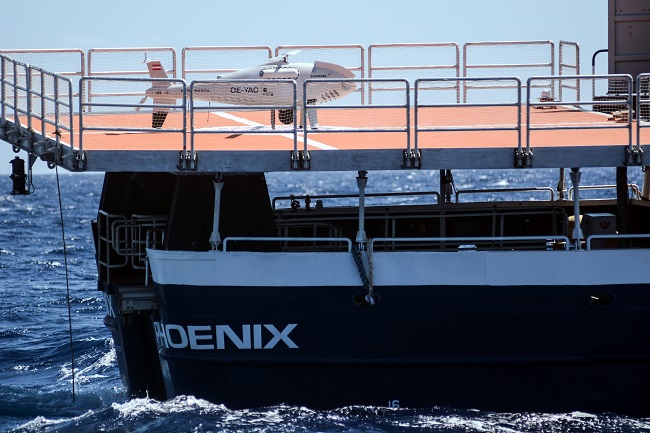
One of the two drones produced by Schiebel of Austria onboard the Phoenix.
The two remotely-piloted aircraft, which are being leased from Schiebel of Austria, carry sophisticated imaging systems which can film in night vision and Infra Red, sending live pictures back to the pilots on board the ship. They are, essentially, the eyes of the mission, capable of searching a wide area for migrant boats in distress. The price tag for the whole system runs into "quite a few million of euro," according to chairman Hans Schiebel.
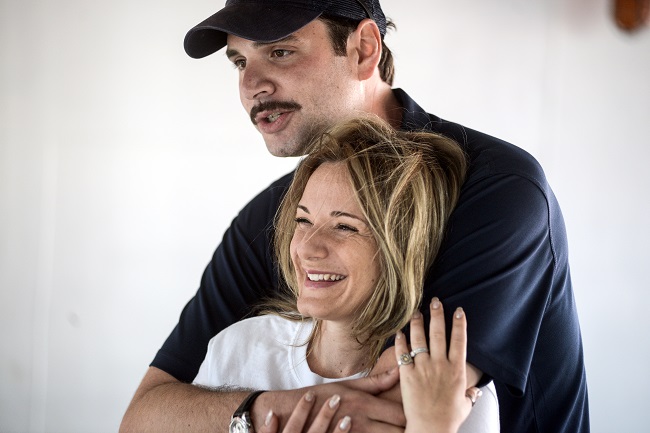
Chris and Regina Catrambone.
Regina Catrambone, who along with her husband Chris is a founding member of MOAS, said the operation is built on three important foundations. The first is the heart, the belief that no one deserves to die at sea. The eyes are the heli-drones. And the voice of the mission is the media, whose keen interest and help has been instrumental.
Not a ferry boat for migrants
Mrs Catrambone said Italy's operation Mare Nostrum has saved thousands of migrants but its future is no longer guaranteed and more boats have been reaching Italy's shores unchecked, many times carrying children. The situation in Libya and Gaza is making the situation worse.
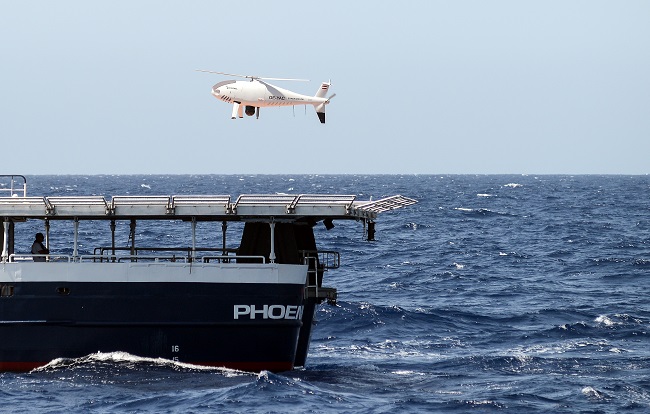
The drones were successfully tested for the first time. They carry sophisticated imaging equipment and have a range of 100 km.
"Our focus is on the young child who finds himself or herself on an unsafe boat through no fault of their own. We believe they deserve to be saved. If they manage to reach Italy or Malta they might be sent back or struggle to get protection but at least they will not have died at sea. And maybe one day they will grow up and dedicate some of their time, money and energy to help others. That is our mission."
'We will stop people from drowning'
Flanked by husband Chris, who is accompanying the first mission, and Brigadier Martin Xuereb, who is the director of MOAS, Mrs Catrambone insisted that the Phoenix will not be a migrant ferry boat. "We will simply stop people from drowning and provide the necessary assistance."
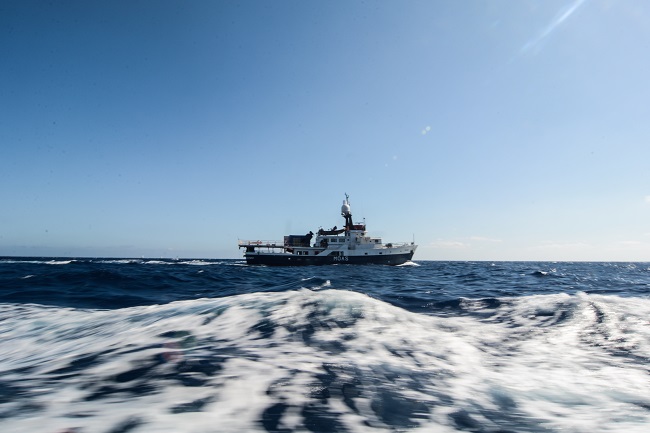
The Phoenix heading towards the testing site this morning.
On his part, the former AFM commander said the Phoenix and her 16-member crew will be an added asset at the disposal of the authorities, just as any fishing boat or commercial vessel. "The only difference is that we have the capabilities, experience and willingness to assist effectively."
Paramedic Adrian Spillett showed journalists around the sickbay and explained that the ship is able to deal with practically any emergency typical of a migrant rescue. A Texas-based company has recently made a considerable donation, greatly boosting medical supplies and equipment.
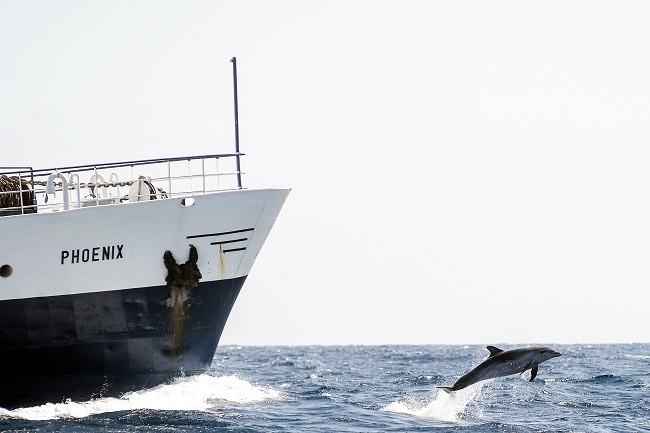
Dolphins greet the Phoenix
Following a quick breakfast on the boat, journalists were transferred to a second vessel to accompany the Phoenix some 20 nautical miles out at sea, where the drones could be tested. And, as if a sign of good luck a school of dolphins surfed the Phoenix's bow waves for part of the journey. Once at the destination one of the drones was successfully launched from the specially constructed flight deck on the MOAS ship and all the control and imaging systems were found to be in working order.
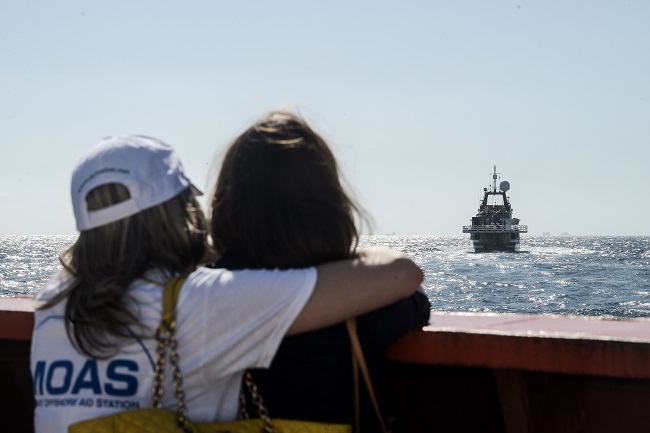
Regina Catrambone and her daughter look on as the Phoenix heads away for its first mission.
The media vessel then headed back to port, while the Phoenix steamed towards Malta's south coast where, after picking up more supplies, she headed in the general direction of Lampedusa. The ship and her crew will spend the next twenty days cruising the seas, searching for migrant boats with the two drones or waiting for a call for assistance by the Maltese, Italian or Libyan authorities. Migrants in distress will be given food, water and life jackets and medical care will be provided to those that might need it. The Phoenix will spend 60 days at sea this summer. The first mission will last 20 days.